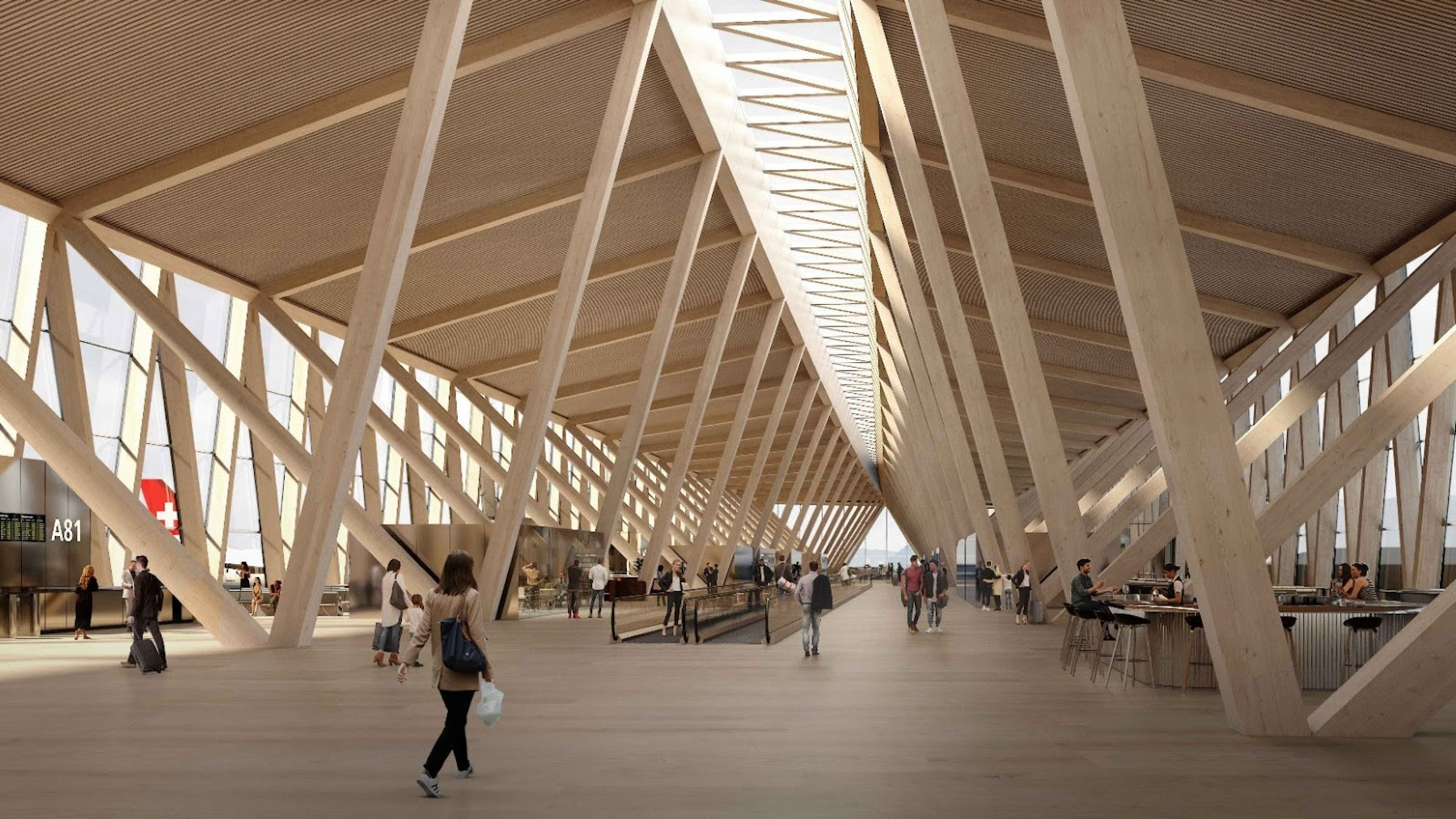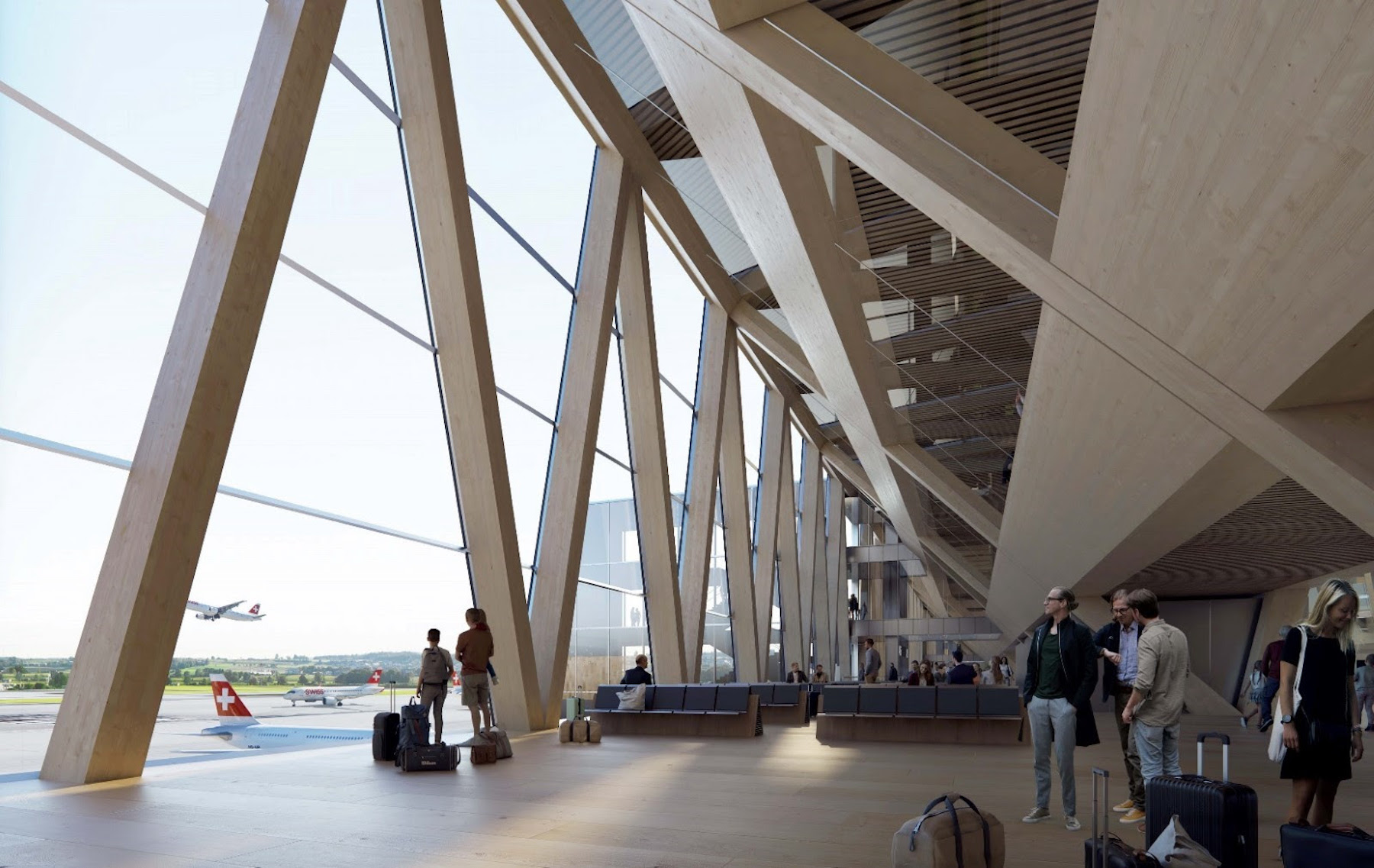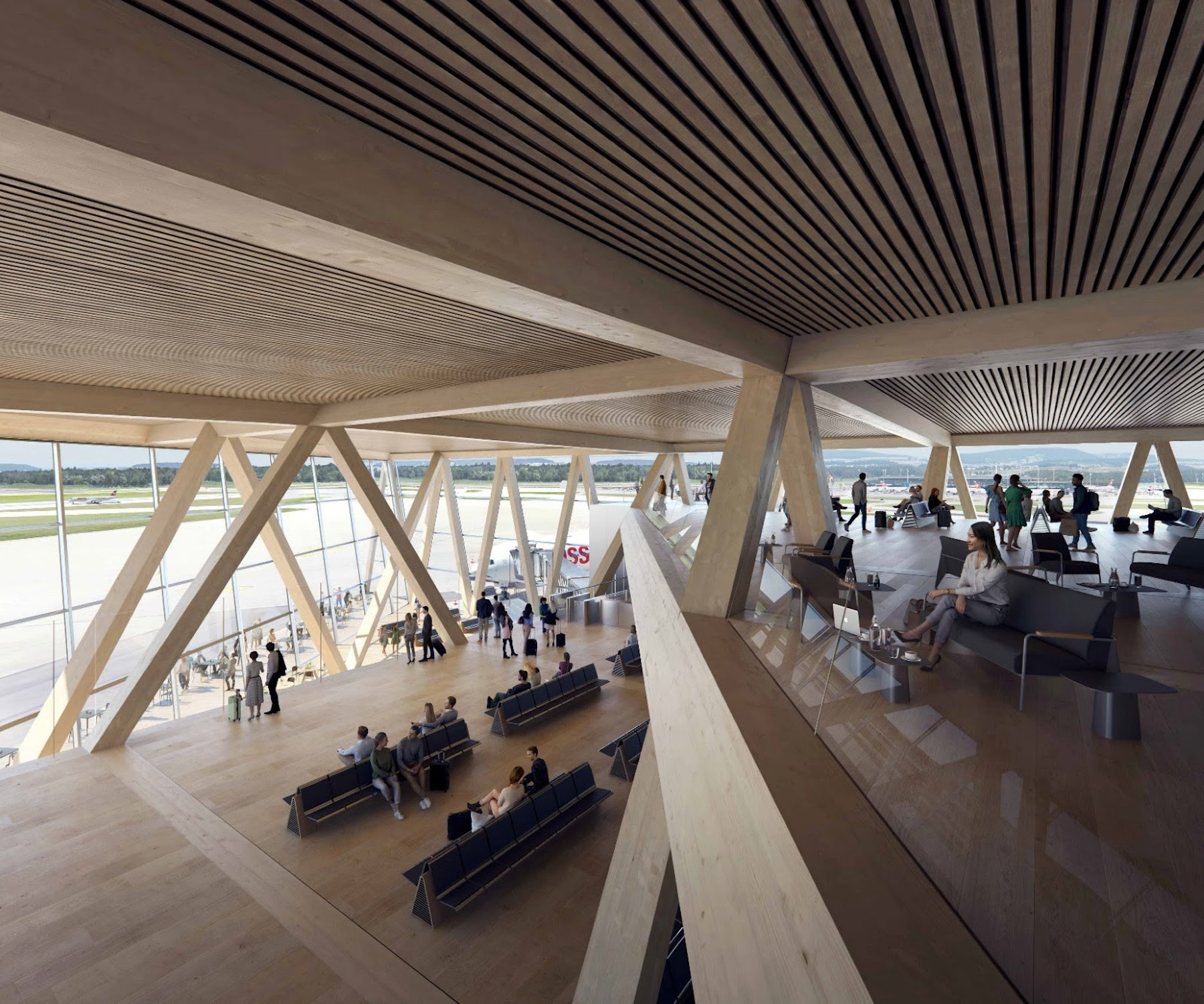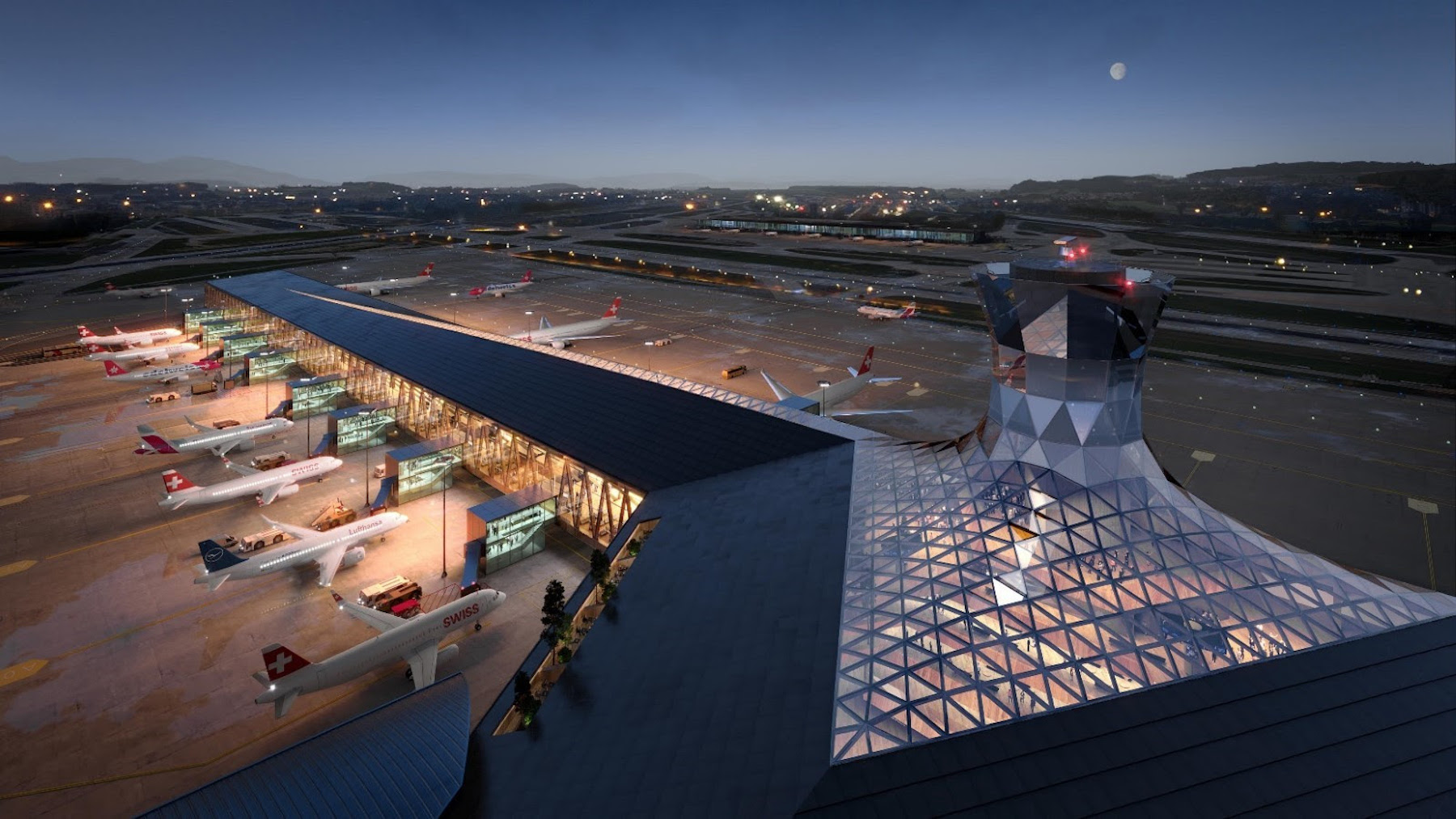Two years ago, Zurich Airport, which opened in the 1950s, launched an international design competition to replace the aging Dock A—the airport’s largest dock. The winning design is led by BIG, with HOK as the aviation architect. The new Dock A—including gates, retail, lounges, offices, a new air traffic control tower, and an extension of the immigration hall—is slated to open by 2032.
The seven-floor Dock A will have two main areas: a central hub with shopping, airport services for arriving and departing passengers, and vertical circulation; and a pier with the gates, waiting areas, and fixed links connecting to the planes. The control tower will be placed in the building’s center.
Dock A’s structure, floors, and ceilings will be made primarily with mass timber. A renewable local resource, this material will allow for prefabrication during the construction process—while also nodding to the Swiss tradition of wood construction. The building’s V-shaped timber columns not only provide structural support but also reference Switzerland’s iconic mountains and pitched roofs.
“As airports grow and evolve and as international guidelines and safety requirements change, airports tend to become more and more complex: Frankensteins of interconnected elements, patches and extensions,” Bjarke Ingels, founder and creative director, BIG, said in a statement. “For the new main terminal of Zurich Airport, we have attempted to answer this complex challenge with the simplest possible response: a mass timber space frame that is structural design, spatial experience, architectural finish, and organizational principle in one.”
The long, sculptural roof will be covered with PV panels. Integrated shading will reduce solar heat gain and maintenance requirements. And the building will use a combination of water and air-based cooling and heating systems.
The “simple yet expressive design,” Ingels added, embodies “the cultural and natural elements of Swiss architecture.”
On the building team:
Owner: Zurich Airport
Design lead: BIG
Aviation architect: HOK
Local architect: 10:8
Structural engineer: Buro Happold
Structural engineer timber/building physics: Pirmin Jung Schweiz AG
Mechanical engineer: Haerter & Partner AG
Electrical engineer: TLP
Construction management: Baurealisation



Related Stories
| Jul 18, 2014
Engineering firms look to bolster growth through new services, technology [2014 Giants 300 Report]
Following solid revenue growth in 2013, the majority of U.S.-based engineering and engineering/architecture firms expect more of the same this year, according to BD+C’s 2014 Giants 300 report.
| Jul 18, 2014
Top Engineering/Architecture Firms [2014 Giants 300 Report]
Jacobs, AECOM, Parsons Brinckerhoff top Building Design+Construction's 2014 ranking of the largest engineering/architecture firms in the United States.
| Jul 18, 2014
Top Engineering Firms [2014 Giants 300 Report]
Fluor, Arup, Day & Zimmermann top Building Design+Construction's 2014 ranking of the largest engineering firms in the United States.
| Jul 18, 2014
Top Architecture Firms [2014 Giants 300 Report]
Gensler, Perkins+Will, NBBJ top Building Design+Construction's 2014 ranking of the largest architecture firms in the United States.
| Jul 18, 2014
2014 Giants 300 Report
Building Design+Construction magazine's annual ranking the nation's largest architecture, engineering, and construction firms in the U.S.
| Jul 7, 2014
7 emerging design trends in brick buildings
From wild architectural shapes to unique color blends and pattern arrangements, these projects demonstrate the design possibilities of brick.
| Jul 2, 2014
Emerging trends in commercial flooring
Rectangular tiles, digital graphic applications, the resurgence of terrazzo, and product transparency headline today’s commercial flooring trends.
| Jun 30, 2014
Arup's vision of the future of rail: driverless trains, maintenance drones, and automatic freight delivery
In its Future of Rail 2050 report, Arup reveals a vision of the future of rail travel in light of trends such as urban population growth, climate change, and emerging technologies.
| Jun 18, 2014
Arup uses 3D printing to fabricate one-of-a-kind structural steel components
The firm's research shows that 3D printing has the potential to reduce costs, cut waste, and slash the carbon footprint of the construction sector.
| Jun 12, 2014
Austrian university develops 'inflatable' concrete dome method
Constructing a concrete dome is a costly process, but this may change soon. A team from the Vienna University of Technology has developed a method that allows concrete domes to form with the use of air and steel cables instead of expensive, timber supporting structures.

















